Discover Montana's Breathtaking Waterfall Hikes
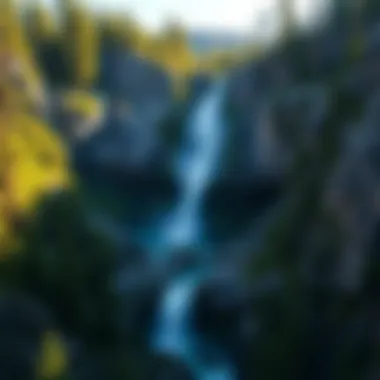
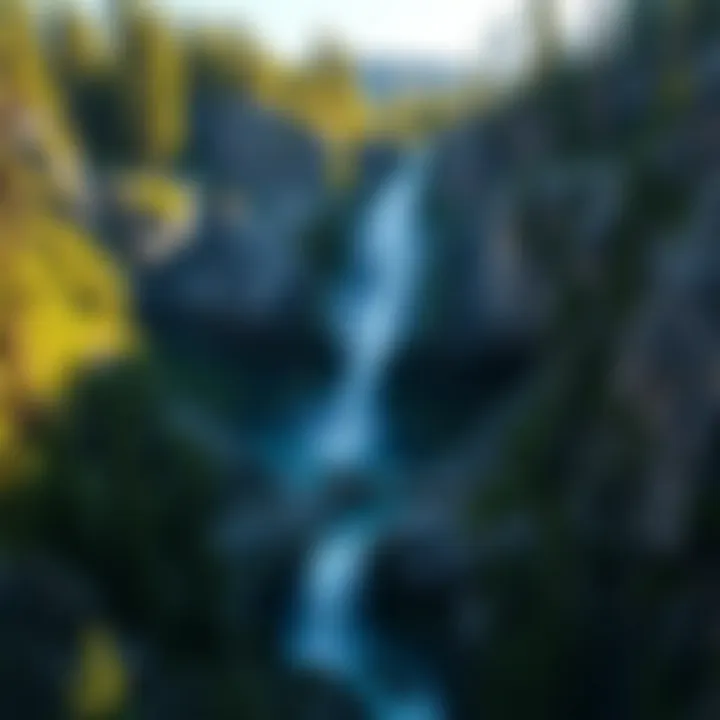
Intro
Montana is often dubbed the last best place, and for good reason. The landscape is an intricate tapestry of rugged mountains, expansive forests, and, most captivating of all, stunning waterfalls. As you lace up your hiking boots and venture into the wilderness, it's essential to understand the ecological significance of these waterfalls, not just as beautiful vistas but as vital components of the forest ecosystems surrounding them.
The state offers a myriad of hiking trails that lead to these cascading water creations. From Glacier National Park to the less-traveled paths of the Lewis and Clark National Forest, each trail provides a unique opportunity to witness nature's artistry while also gaining a deeper appreciation for the ecosystems at play. This guide aims to equip hikers with the knowledge needed to enjoy these pristine environments responsibly.
In an age where sustainability is increasingly vital, the relationship between the trails we wander and the natural world we experience comes into sharper focus. Through understanding the flora and fauna of Montana's woodlands, hikers can contribute to conserving these breathtaking landscapes for generations to come.
Prelims to Montana's Waterfalls
Montana is a treasure trove of natural wonders, and its waterfalls stand as one of the most breathtaking features of its landscape. These cascading waters not only enhance the scenery but also play a pivotal role in the ecological balance of the regions they inhabit. This section addresses the importance of understanding Montana's waterfalls, emphasizing the beauty, diversity, and significance they bring to both the natural environment and those who seek them out.
Geographical Overview
Montana's geographical diversity is quite remarkable. From the rugged Rocky Mountains to the vast plains, the state showcases a variety of ecosystems. Waterfalls can be found nestled in these various terrains, often originating from glacial melt or mountain streams. The connection between elevation and waterfall location is crucial; many of the most prominent falls are located in national parks such as Glacier and Yellowstone. These parks represent a convergence point for visitors drawn to dramatic elevations, where water courses meet steep inclines and abruptly drop, revealing nature’s raw power.
- Key Areas of Interest:
- Glacier National Park - Home to over 700 named lakes and countless waterfalls, the park harbors iconic sites like St. Mary and Virginia Falls.
- Yellowstone National Park - Renowned for its geothermal features, Yellowstone’s waterfalls, including the grand Lower Falls of the Yellowstone River, are a testament to its natural beauty.
- Lolo National Forest - A lesser-known gem where access to serene waterfalls can lead to an intimate experience with nature.
This geographical richness signifies that Montana's waterfalls are not just isolated phenomena; they are integral to the state’s topographical identity, weaving a narrative of geological evolution and natural history.
Ecological Importance of Waterfalls
Beyond their aesthetic appeal, waterfalls serve critical functions in their ecosystems. These cascading waters contribute to the biodiversity of their surroundings in several ways:
- Habitat Creation: Waterfalls often create unique microhabitats. The spray from waterfalls can nurture a variety of plant species that thrive in the moist, cool environment, providing a haven for diverse wildlife, including amphibians and birds.
- Nutrient Cycling: As water flows over rocks, it erodes and breaks down minerals, enriching the water and soil. This process supports a range of aquatic life and promotes healthy ecosystems downstream.
- Sediment Transport: Waterfalls are vital in transporting sediments that naturally shape riverbanks and floodplains. This sediment movement is essential for maintaining ecological balance within river systems, contributing to the formation of new habitats.
"Waterfalls are more than beautiful sights; they are lifebloods of our ecosystems, fostering diverse plant and animal life while shaping our landscapes."
Understanding the ecological significance of waterfalls enhances our appreciation of them, elevating them from mere scenic visions to vital components of Montana's ecosystems. By recognizing their role in supporting wildlife and their environment, hikers and nature enthusiasts can deepen their connection to these spectacular natural features.
Popular Hiking Trails Featuring Waterfalls
When exploring Montana, few experiences can rival the thrill of hiking trails that lead to stunning waterfalls. These trails not only highlight the natural beauty of the state but also offer unique encounters with diverse ecosystems. Each waterfall represents a point where water meets land; their cascading streams attract hikers craving both adventure and tranquility. Whether you are a seasoned trekker or just beginning, embracing the trails offers an opportunity to immerse yourself in the wilderness and witness nature's artistry up close.
Glacier National Park: Hidden Gems
St. Mary Falls Trail
The St. Mary Falls Trail offers a picturesque 3.6-mile hike that showcases some of Glacier’s most striking vistas. This trail is particularly well-known for its vibrant flora and the dramatic contrast formed by the blue waters of St. Mary Falls against the surrounding green landscape. What sets St. Mary Falls apart is the accessibility combined with the awe it inspires. It is a favored choice among families and casual hikers for its relatively moderate difficulty level, allowing for a satisfying experience without overwhelming exertion.
However, one should keep in mind that the trail can become crowded during peak seasons. The unique feature of St. Mary Falls is the way it seems to appear suddenly after traversing the wooded section of the trail, providing a stunning payoff—a perfect spot for photography or simply soaking up the beauty of cascading water.
Virginia Falls Trail
A relatively shorter hike, the Virginia Falls Trail packs a punch with its breathtaking views and vibrant waterfalls. Spanning about 4.0 miles round trip, this trail leads to a stunning waterfall that tumbles down in a magnificent display, often creating rainbows in its mist on sunny days. Virginia Falls is frequently chosen by hikers seeking a quick escape into nature, making it an excellent option for locals looking for a weekend retreat.
The cascading waters, particularly after spring snowmelt, reveal a powerful force that serves as a reminder of nature's raw energy. However, it can be slippery and tricky along the rocks, particularly after rain. This adds a level of caution to your hike, requiring sound judgment and prepared footwear.
Yellowstone National Park: Iconic Routes
Fairy Falls Trail
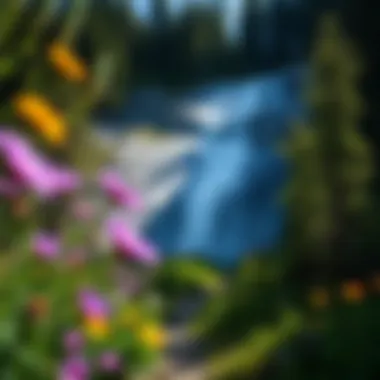
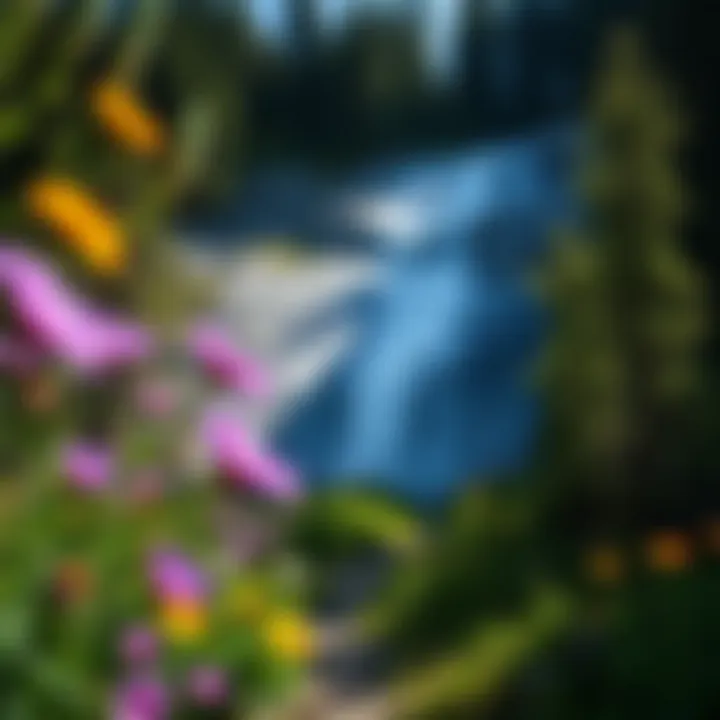
Among the many trails in Yellowstone, the Fairy Falls Trail is distinguished by its breathtaking views and direct approach to one of the park’s tallest waterfalls. At around 5.4 miles, the hike takes visitors through stunning wildflower-filled meadows, eventually leading them to a serene vista of Fairy Falls plummeting some 197 feet into a tranquil pool. The allure of this trail lies in its gentle slopes and the variety of landscapes one encounters along the way, making it very popular among families and casual hikers.
The trail also serves as a gateway to other scenic routes, offering an experience that can be expanded for those looking for a more strenuous day. However, with increased foot traffic, it's essential to be mindful of the environment and wildlife.
Tower Fall Trail
Tower Fall is renowned for its dramatic landscape, showcasing a 132-foot drop surrounded by towering cliffs. The Tower Fall Trail leads visitors through national history as they walk past a cascade of water that has inspired poets and artists alike. The blend of historical significance and natural beauty makes this trail a must-see. The round trip is about 1.7 miles, making it accessible even for those with limited hiking experience.
The observation point allows a safe viewing experience while capturing iconic photos of the fall. Visitors should be wary of the trail's uneven surfaces, which can make navigation tricky. Still, the opportunity to see Tower Fall's power makes the journey worthwhile.
Lolo National Forest: Serene Experiences
Waterworks Trail
The Waterworks Trail is a hidden retreat for many hikers looking to escape the bustle. Stretching about 3.6 miles, this trail weaves through lush forest before arriving at a delightful waterfall that offers a gentle ambiance, perfect for reflection. One of its standout features is the lush canopy overhead, making it a great option during the warmer months when shade is desired.
While it may not be the most well-known waterfall trail, it attracts those who are keen on solitude and contemplation, allowing visitors to absorb the serene surroundings. Hikers should be prepared with hydration, as amenities are sparse nearby.
Morrell Falls Trail
The Morrell Falls Trail spans approximately 2.7 miles offering a unique hiking experience through picturesque surroundings. This moderately easy trail leads hikers to Morrell Falls, which cascade down in an impressive display, especially during the spring melt. The scenic views of the surrounding valley and mountains enhance its charm, making it an appealing escape into the wilderness.
This trail also allows adventurers to witness a variety of wildlife, including deer and various bird species, presenting an ideal opportunity for wildlife enthusiasts to appreciate nature intimately. The short distance and stunning destination make Morrell Falls a great choice, but hikers should be ready for unpredictable weather in the region, as conditions can change quickly.
In exploring Montana's trails featuring waterfalls, each path offers a unique experience that reflects the region's beauty, diversity, and ecological significance.
Best Times to Hike
Understanding the best times to hike in Montana is crucial for those looking to experience the majesty of the state’s waterfalls. Each season brings distinct elements, making certain periods more favorable for those scenic views and safe adventures. Well-timed hikes can offer breathtaking experiences, rich flora and fauna encounters, and the most memorable sights of cascading waters. This section outlines what each season uniquely provides, equipping the reader to plan an unforgettable journey through Montana's stunning landscapes.
Spring: Melting Snow and Cascades
Spring in Montana is marked by the enchanting thaw. As the winter chill recedes, the snow on the mountains begins to melt, feeding the mountain streams and waterfalls. This transformation is not just a matter of warmth; it's an annual refresh of the landscape.
During this season, trails often remain muddy or slippery as the snow gives way to water, meaning appropriate footwear is vital. Hikers can expect vibrant wildflowers gradually breaking through the earth, creating a contrast against the rushing waters. The sounds of trickling water and lively wildlife resonate through the air, enhancing the serene atmosphere. Be mindful, though, that some trails may still be closed due to lingering snow or muddy conditions.
"Spring is the time of plans and projects." - Leo Tolstoy
The delicate balance of nature during this time reminds us of the importance of patience and respect towards the landscape as it comes to life once more.
Summer: Full Flow and Clear Trails
Summer is perhaps the most favored time for hikers, as the trails are dry and the waterfalls reach their peak flow. This season showcases the waterfalls at their most vibrant; summer sunshine illuminates the cascading water, turning it into sparkling jewels against lush backdrops.
The warm weather encourages longer hiking days. However, hydration becomes essential, as temperatures can climb on the more strenuous treks. Don’t forget sunscreen and bug spray, as the summer months also herald a heightened presence of insects. Exotic bird songs fill the air, which can be a delightful soundtrack to your adventure. Uniquely, summer also allows access to more high-altitude trails that may remain inaccessible earlier in the year.
Autumn: A Colorful Contrast
Autumn brings a visual feast as trees adorn themselves in spectacular hues of orange, red, and gold. The crisp air is invigorating, and the trails can be less crowded, providing a sense of serenity uncommon in the busier summer months. With the waterfalls still flowing robustly, the sight of vibrant foliage paired with the glistening water displays an exquisite contrast.
Yet, with the transition to cooler weather, hikers should be prepared for sudden changes in temperature. Layered clothing is advisable; as the sun sets, temperatures can drop sharply. The autumn season also signals the migration of wildlife as they prepare for winter, offering keen observers the chance to witness unique animal behavior.
When planning hikes during this season, it's beneficial to check local recommendations, as some trails may begin closing down as winter nears.
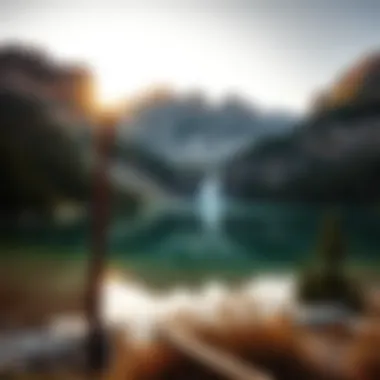
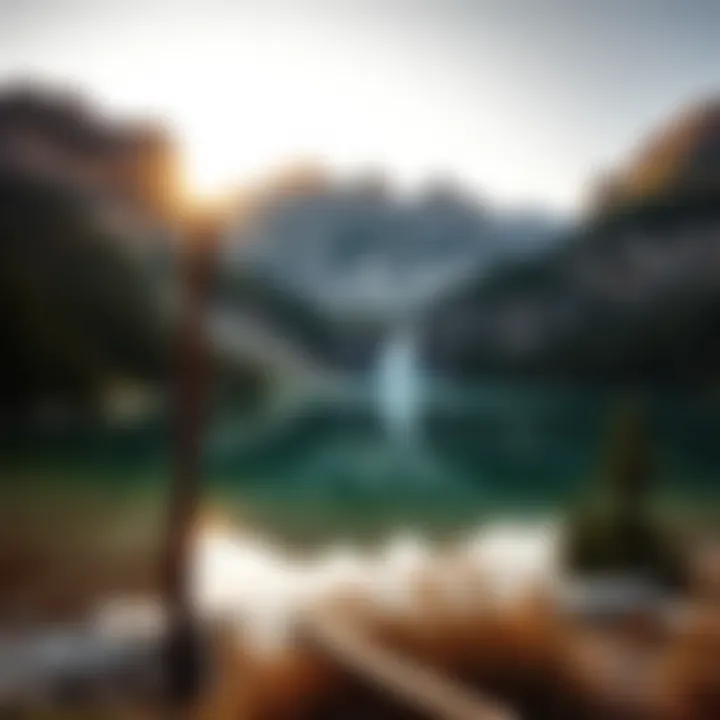
Each season in Montana offers distinct features that can enhance your hiking experience beautifully. Timing your visit can allow you to witness these natural wonders in their peak glory.
Preparing for the Hike
When it comes to enjoying the natural splendor of waterfalls on Montana's trails, preparation is half the battle won. Knowing how to gear up, both physically and mentally, sets the stage for a rewarding experience. Hikes can range from easy walks to strenuous treks, and understanding your own limits alongside the terrain is crucial. Proper preparation helps ensure safety, enhances enjoyment, and allows you to fully immerse yourself in the breathtaking landscapes.
Essential Gear and Supplies
Equipping yourself with the right gear can make all the difference in your hiking adventure. Each piece of equipment plays a vital role in ensuring your safety and comfort, allowing you to focus on the stunning scenery around.
Footwear
The foundation of a successful hike really begins with your choice of footwear. Proper hiking boots are designed not just to protect but to provide stability. Look for boots that have good ankle support and a solid grip to adapt to the rocky and uneven terrains that often lead to waterfalls.
A key characteristic of quality hiking boots is their durability. Less than ideal footgear can lead to discomfort or even injuries like blisters, which can quickly dampen a great day outside. A pair made from breathable materials will keep your feet dry, while a waterproof option can be invaluable when crossing streams. These unique features allow for versatility, ensuring prolonged use in various conditions without sacrificing comfort.
Navigation Tools
As with wandering into the wild, understanding your surroundings is paramount. A good map and compass, or a GPS device, can serve as your guiding star. While modern technology has simplified navigation, it doesn’t replace the knowledge of reading an old-school map.
Safety on the trails lies in knowing where you stand. A standout aspect of navigation tools is their reliability in areas where signal might leave you stranded. A detailed trail map can elevate your hiking experience by introducing you to alternate routes, and possibly lesser-known spots. Always familiarize yourself with your chosen navigation tool before setting out, as this can make excursions way more enjoyable.
Safety Equipment
Safety equipment ought to be a non-negotiable part of your hiking arsenal. First aid kits are essential for minor injuries; having one on hand can literally save the day. This kit should include basic medical supplies such as band-aids, antiseptic wipes, gauze, and any necessary personal medications.
Being prepared goes beyond just medicine. A whistle can be immensely helpful to signal for help if you get lost. Additionally, having a means of communication, like a fully charged mobile phone stored in a waterproof case, connects you back to the world outside the wilderness should an emergency arise. Each component of your safety gear brings a level of assurance that helps you navigate the unknown — physically and psychologically.
Physical Preparation
Getting ready for a hike isn't strictly about packing gear; it's also about preparing your body. Walking and climbing can test your endurance. Engaging in some light workouts leading up to your trip can enhance endurance and reduce fatigue. Focus on cardio to help build stamina, and incorporate leg-strengthening exercises to ensure your muscles are well-equipped for the ups and downs of mountain trails. Even doing some simple stretches the week prior can help activate those underused muscles. Remember, being in shape not only makes the hike easier but also adds to the enjoyment, letting you truly relish every moment spent in nature.
Responsible Hiking Practices
Responsible hiking practices are the bedrock of preserving Montana's natural beauty for future generations. When adventurers take to the trails, they not only seek personal enrichment through the scenic vistas but also share a collective duty to safeguard these landscapes. Understanding and implementing principled hiking behaviors not only ensures enjoyable experiences but also helps to conserve the ecosystems that make these hikes worthwhile.
At the heart of responsible hiking lies the commitment to preserving the environment and minimizing human impact. Enthusiasts must recognize that their footprints reach beyond mere trails; they ripple through habitats, influencing the intricate balance of the local flora and fauna. By adhering to responsible practices, hikers contribute to the sustainability of ecosystems and encourage a culture of respect for nature.
One significant aspect to weigh in is the intersection of outdoor recreation with conservation. The beauty of Montana’s waterfalls, cascading down rugged rocks, reflects unique geological and ecological processes. Hikers should approach these natural marvels with a sense of reverence, knowing that their habits can either protect or degrade these environments.
Key Benefits of Responsible Hiking Practices:
- Protects Wildlife Habitats: Minimizing disturbances helps preserve the natural homes of various species.
- Maintains Trail Integrity: Responsible practices prevent trail erosion and sustains pathways for future hikers.
- Enhances Visitor Experience: Clean, well-maintained areas are more enjoyable for everyone.
Leave No Trace Principles
Leave No Trace principles are essential for any outdoor activity but gain particular importance in regions as pristine as Montana. These guidelines focus on responsible outdoor ethics, intending to mitigate the negative impact of human activities in natural spaces. The principles encourage hikers to enjoy their surroundings without leaving behind signs of their passage.
Each of the seven principles serves a specific purpose:
- Plan Ahead and Prepare: Know the terrain and weather conditions, ensuring safety and minimizing disruption to the environment.
- Travel and Camp on Durable Surfaces: Stick to established paths and campsites to reduce soil erosion.
- Dispose of Waste Properly: Pack it in, pack it out—take any waste with you, including biodegradable materials.
- Leave What You Find: Take only photos and memories; leave rocks, plants, and historical items undisturbed.
- Minimize Campfire Impact: Consider using a portable stove for cooking instead of making fires, and if a fire is necessary, use established fire rings.
- Respect Wildlife: Observe from a distance and never feed wildlife, as this disrupts their natural behaviors.
- Be Considerate of Other Visitors: Keep noise levels down and yield the trail to those ascending.
Implementing these principles not only contributes to environmental conservation but also enhances the experience for everyone on the trail.


Wildlife Interaction Guidelines
When hiking in Montana, particularly in areas with rich biodiversity, understanding how to interact with wildlife is paramount. Interactions with wildlife can lead to unforgettable experiences but also carry risks if not approached with caution and respect.
- Observe from a Distance: Maintain a respectful distance from all wildlife. This helps to keep both hikers and animals safe, as approaching too closely can cause stress or provoke defensive behavior.
- Do Not Feed Animals: Feeding wildlife can disrupt their natural foraging behaviors and create dependency on human food. It may also turn animals aggressive towards humans.
- Keep Pets on Leashes: This not only safeguards your pet but also protects local wildlife. Unleashed pets can disturb natural habitats and provoke stress among animals.
- Understand Bear Safety: In bear country, educate yourself about mitigating bear encounters. Carry bear spray, make noise while hiking, and know how to react if you encounter one.
- Report Wildlife Sightings: If you notice injured or unusually behaving animals, notify park or wildlife authorities. Your observation can assist in conservation efforts.
Through mindful interactions, hikers contribute to a harmonious balance between human enjoyment and wildlife preservation, enriching both their own experiences and the natural world that holds so much wonder.
The Role of Waterfalls in Ecosystems
Waterfalls do not just offer breathtaking views; they play a pivotal role in the ecosystems surrounding them. Their significance is often underscored yet not fully appreciated by many outdoor enthusiasts. Understanding the multifaceted impact of waterfalls enhances the appreciation of Montana’s natural wonders and strengthens our commitment to conservation.
Sediment Transport and Habitat Creation
Waterfalls are dynamic systems that actively shape their landscapes. When water tumbles over rocky outcroppings, it causes significant erosion, carrying away sediment. This sediment transport not only influences the riverbed below but also creates diverse habitats along the banks.
For instance, as waterfalls erode their surroundings, they produce pools, eddies, and gravel bars. Each of these formations provides various microhabitats that support different species.
- Pools: Deeper sections formed at the base of waterfalls offer a refuge for fish and aquatic invertebrates.
- Gravel Bars: Newly deposited sediments create spawning grounds for fish, promoting biodiversity.
- Eddies and Shallows: These areas are vital for insects, which in turn feed birds and other predators.
This cascading water not only breaks down rocks into smaller particles but also mixes and enriches stream ecosystems. By transporting organic material downstream, waterfalls foster nutrient cycling, supporting plant life along the waterways.
Additionally, the consistent flow of water contributes to habitat stability, permitting species to thrive in a familiar environment despite seasonal fluctuations. This persistence is crucial for the survival of many aquatic organisms.
Water Quality Improvement
Waterfalls also hold remarkable benefits for water quality. As water cascades down, it undergoes natural filtration processes that contribute to cleaner waterways. The turbulent motion of falling water increases the oxygen saturation in these streams, which is essential for aquatic life.
Higher oxygen levels promote the growth of beneficial bacteria that break down organic matter. Subsequently, this leads to improved water clarity, enabling sunlight to penetrate deeper into the water column. Sunlight supports the growth of aquatic plants, which play a vital role in stabilizing the ecosystem.
- Filtration: Rocks and sediment at the base of waterfalls act as natural filters, capturing pollutants and sediment that may threaten water quality.
- Diversity of Flora and Fauna: Clean, oxygen-rich water encourages more diverse communities, which in turn create a more resilient ecosystem capable of withstanding environmental stresses.
"Waterfalls are not just a visual delight; they are ecological marvels that deserve our respect and protection." - Anonymous
Epilogue: The Hiker's Journey
As we walk through the wilds of Montana, the journey unfolds not just in distance but in the profound connection to the environment. From the roaring waters of St. Mary Falls to the serene cascades in Lolo National Forest, waterfalls offer more than a picturesque backdrop; they serve as vital components of the ecosystem and avenues for reflection. Every hiker’s journey culminates in a deeper appreciation for the natural world, where the sights and sounds etch themselves into our memories.
In contemplating these landscapes, hikers discover that beauty goes hand-in-hand with responsibility. It’s pivotal to grasp that these trails are not just for our enjoyment, but also for preservation. Montana’s waterfalls are lifelines for many species, contributing to diverse habitats that flourish around them. A hiker must embrace this dual role of adventurer and steward, recognizing that every step taken on the trail resonates with the health of these ecosystems.
This journey is not solely about the destination, but the experiences woven into each hike. The challenge of rugged terrains, the serenity of lush tree lines, and the exhilarating rush of fresh, crisp air all paint a comprehensive picture of nature’s artistry. As hikers reflect on their encounters with the falling water, it becomes clear that the lessons taught by nature extend beyond an outing; they call for ongoing commitment to conservation and keeping these trails open for generations to come.
Reflecting on Nature’s Beauty
These waterfalls help highlight the sheer magnificence of Montana's landscapes. Each cascade is a unique expression of nature's artistry, carving its way through various terrains to create stunning vistas. Observing the interplay of light and water as the sun filters through the trees brings a sense of peace that jargon or daily stresses can't touch. We become privy to the raw power of nature, feeling both insignificant in its vastness and yet deeply entwined within its narrative.
When we encounter a waterfall, we engage all of our senses. The sound of water crashing, the mist cooling our skin, the vibrant colors of ferns and moss provide a multisensory experience that enchants the soul. Such moments can lead to personal reflection, allowing one to ponder life’s bigger questions or simply to relish the now. It calls for mindfulness—an opportunity to connect with nature, strip away the clutter of everyday life, and recharge before embarking on the journey back.
Encouraging Stewardship and Conservation
As we admire these splendid sights, it's vital to remember that our actions affect the delicate ecosystems we traverse. Each hiker is a temporary guest in this wilderness, and with that privilege comes the responsibility to protect it. Practicing Leave No Trace principles while hiking fosters a culture where we prioritize the preservation of these natural paradise spaces over our conveniences.
Encouraging stewardship isn’t just about personal accountability; it also involves educating others about the importance of conservation. Engaging in local groups dedicated to trail maintenance and preservation helps foster communal efforts toward sustainability. Supporting efforts like these not only enriches our immediate environment but also builds a legacy for future explorers.
Thus, the journey doesn’t end when we finish the hike. It evolves into advocacy for these ecosystems, ensuring that Montana's glorious waterfalls endure. By reconvening our commitment to stewardship, the natural beauty we hold dear will remain a source of inspiration for countless adventurers to come.
"Nature does not hurry, yet everything is accomplished." - Lao Tzu
Our hikes through Montana are symbolic of a broader journey—one that unites appreciation with action towards preservation. Ensure that the next time you venture out, you not only revel in nature's spectacle but also advocate for its longevity.















